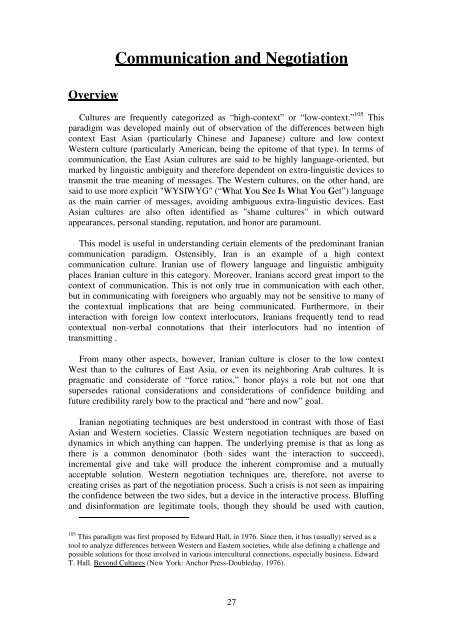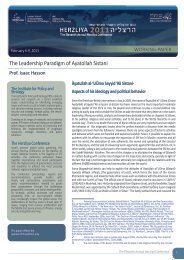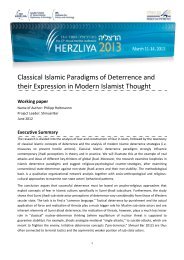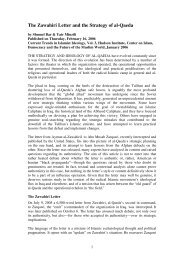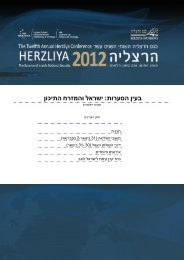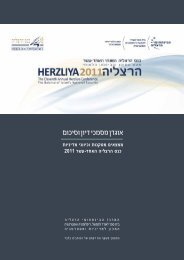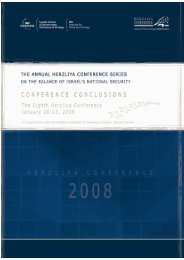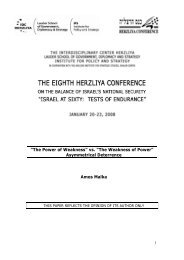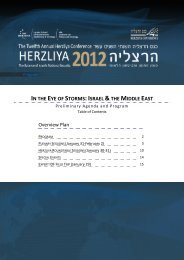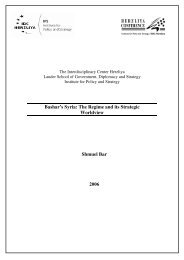Iran: Cultural Values, Self images and Negotiation Behavior
Iran: Cultural Values, Self images and Negotiation Behavior
Iran: Cultural Values, Self images and Negotiation Behavior
Create successful ePaper yourself
Turn your PDF publications into a flip-book with our unique Google optimized e-Paper software.
Communication <strong>and</strong> <strong>Negotiation</strong>OverviewCultures are frequently categorized as “high-context” or “low-context.” 105 Thisparadigm was developed mainly out of observation of the differences between highcontext East Asian (particularly Chinese <strong>and</strong> Japanese) culture <strong>and</strong> low contextWestern culture (particularly American, being the epitome of that type). In terms ofcommunication, the East Asian cultures are said to be highly language-oriented, butmarked by linguistic ambiguity <strong>and</strong> therefore dependent on extra-linguistic devices totransmit the true meaning of messages. The Western cultures, on the other h<strong>and</strong>, aresaid to use more explicit "WYSIWYG" (“What You See Is What You Get”) languageas the main carrier of messages, avoiding ambiguous extra-linguistic devices. EastAsian cultures are also often identified as "shame cultures" in which outwardappearances, personal st<strong>and</strong>ing, reputation, <strong>and</strong> honor are paramount.This model is useful in underst<strong>and</strong>ing certain elements of the predominant <strong>Iran</strong>iancommunication paradigm. Ostensibly, <strong>Iran</strong> is an example of a high contextcommunication culture. <strong>Iran</strong>ian use of flowery language <strong>and</strong> linguistic ambiguityplaces <strong>Iran</strong>ian culture in this category. Moreover, <strong>Iran</strong>ians accord great import to thecontext of communication. This is not only true in communication with each other,but in communicating with foreigners who arguably may not be sensitive to many ofthe contextual implications that are being communicated. Furthermore, in theirinteraction with foreign low context interlocutors, <strong>Iran</strong>ians frequently tend to readcontextual non-verbal connotations that their interlocutors had no intention oftransmitting .From many other aspects, however, <strong>Iran</strong>ian culture is closer to the low contextWest than to the cultures of East Asia, or even its neighboring Arab cultures. It ispragmatic <strong>and</strong> considerate of “force ratios,” honor plays a role but not one thatsupersedes rational considerations <strong>and</strong> considerations of confidence building <strong>and</strong>future credibility rarely bow to the practical <strong>and</strong> “here <strong>and</strong> now” goal.<strong>Iran</strong>ian negotiating techniques are best understood in contrast with those of EastAsian <strong>and</strong> Western societies. Classic Western negotiation techniques are based ondynamics in which anything can happen. The underlying premise is that as long asthere is a common denominator (both sides want the interaction to succeed),incremental give <strong>and</strong> take will produce the inherent compromise <strong>and</strong> a mutuallyacceptable solution. Western negotiation techniques are, therefore, not averse tocreating crises as part of the negotiation process. Such a crisis is not seen as impairingthe confidence between the two sides, but a device in the interactive process. Bluffing<strong>and</strong> disinformation are legitimate tools, though they should be used with caution,105 This paradigm was first proposed by Edward Hall, in 1976. Since then, it has (usually) served as atool to analyze differences between Western <strong>and</strong> Eastern societies, while also defining a challenge <strong>and</strong>possible solutions for those involved in various intercultural connections, especially business. EdwardT. Hall. Beyond Cultures (New York: Anchor Press-Doubleday, 1976).27


